Singer 48K Transverse Shuttle Sewing Machine
Much has been written elsewhere about the model 48K, but unfortunately a lot of this seems to have been wrong, or at least misleading. Some people have chosen to compare the design of the 48K to the New Family (model 12/12K), whereas the more useful comparison should be to the Medium (model 13/13K). Although the 48K utilised the basic mechanism of the 13/13K, it was updated with several more modern features that were presumably borrowed from the established 27/27K, 28/28K models.
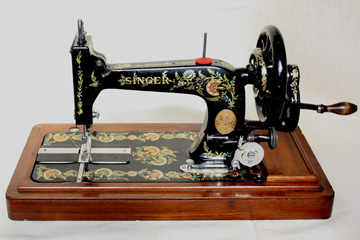
Model 48K2
The major changes between the 48K and 13K were:
- a normal rectangular base instead of the fiddle base shape used on the 13K
- a higher and shorter arm
- an enclosed shuttle in place of the open boat shuttle used on the 13K. The 48K shuttle is similar to that of the 28K, but made to suit a straight race instead of a curved one. It is sometimes referred to as a hybrid shuttle.
- the 48K has a flat faceplate similar to the 28K
- the 48K has round presser and needle bars.
- although the 48K uses the same faceplate mounted tension discs as the 13K, the adjustment of the pressure on the discs is controlled by a coil spring and nut directly on the disc shaft. The tension adjusting nut is therefore at the right of the machine head instead of at the top of the faceplate.
- the 48K used auto-setting type 15x1 needles, which by the time it was made had become the industry standard.
- the 48K used the standard 28K VS long bobbins and the 28K low-mounted auto bobbin winder design.
- the 48K had a shuttle ejector operated by the slide plate, similar to that found on many German machines of the time.
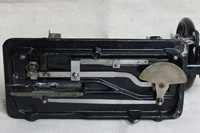
Underbed Mechanism - 48K
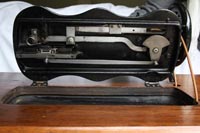
Underbed Mechanism - 13K
The 48K machines are unusual in that the bed of the machine bed measures 13-1/8" x 6-1/4" with overall wooden base dimensions of 19" x 9 1/2". Because this size is unique to only this model, the bases and cases from other models cannot be interchanged with the 48K originals. The 48K is also unusual in that the serial number is stamped behind the main pillar, instead of the usual position in front of it on other models.
The 48K used a unique hybrid shuttle #92879 i.e. an enclosed version of the earlier 12K open boat shuttle, so that it is similar to that of the 28K, but made to suit a straight race instead of a curved one.
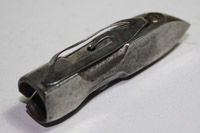
48K Shuttle #92879
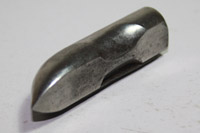
48K Shuttle #92879
The 48 was produced only at the Kilbowie factory in Scotland between 1900 and 1913. The serial number records indicate that a total of 535,150 machines were allocated for production. All of the 48K machines had the Ottoman Carnation decals, although those intended for sale in India had the Indian Star variation in the centre of the bed.
There were 4 sub-versions of the 48K:
48K1 - treadle with black balance wheel
48K2 - hand crank with black balance wheel
48K3 - treadle with plated balance wheel
48K4 - hand crank with plated balance wheel
The standard machines were supplied in a plain wooden box with sliding lid, or a bentwood cover was available for an optional extra costs of 12/6 (12 shillings and 6 pence).
Singer's decision to make the 48K when they did is a mystery, because it clearly reverts back to technology and designs that were already 20 years out of date, and which had been superceded by models such as the 15 and 28 etc. Several people have speculated that the 48K may have been intended as a low cost model to compete with the many German high arm machines being made at the time. This is though just speculation. What is known, is that it was at the bottom of the model range and wasn't generally promoted in sales brochures.
The 48K was priced at £4-0-0 (£4-12-6 with cover) whereas a comparable 28K which appears as the cheapest machine in sales brochures was £5-15-0.
Photos

48K2 - Front
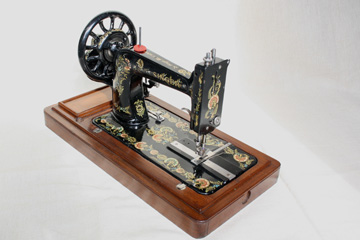
48K2 - Faceplate
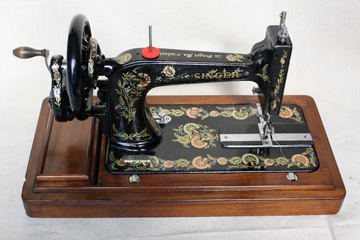
48K2 - Back
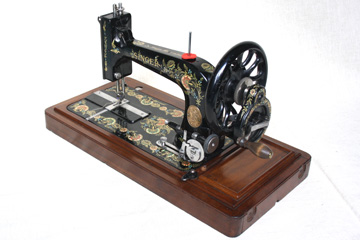
48K2 - Balance Wheel
